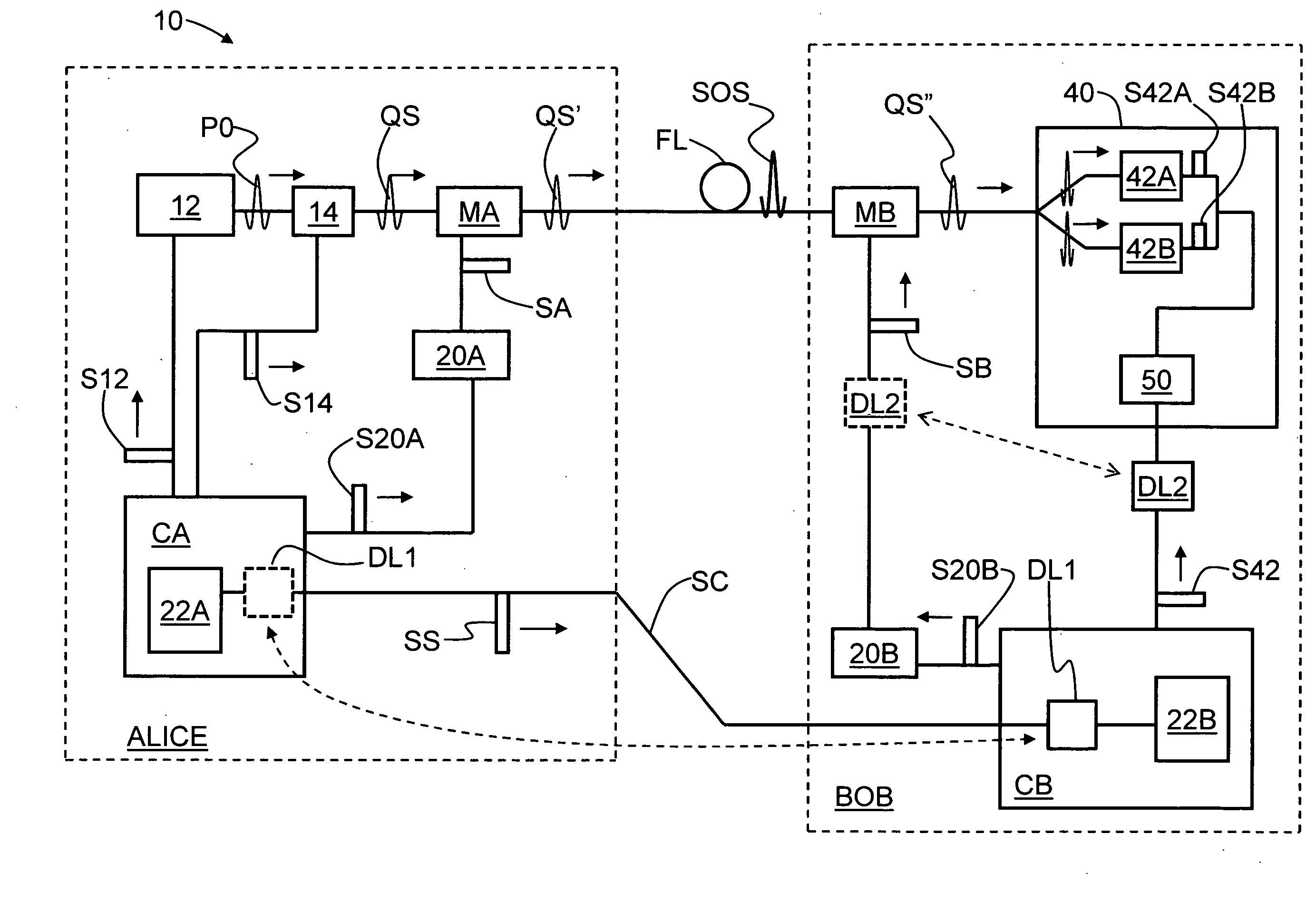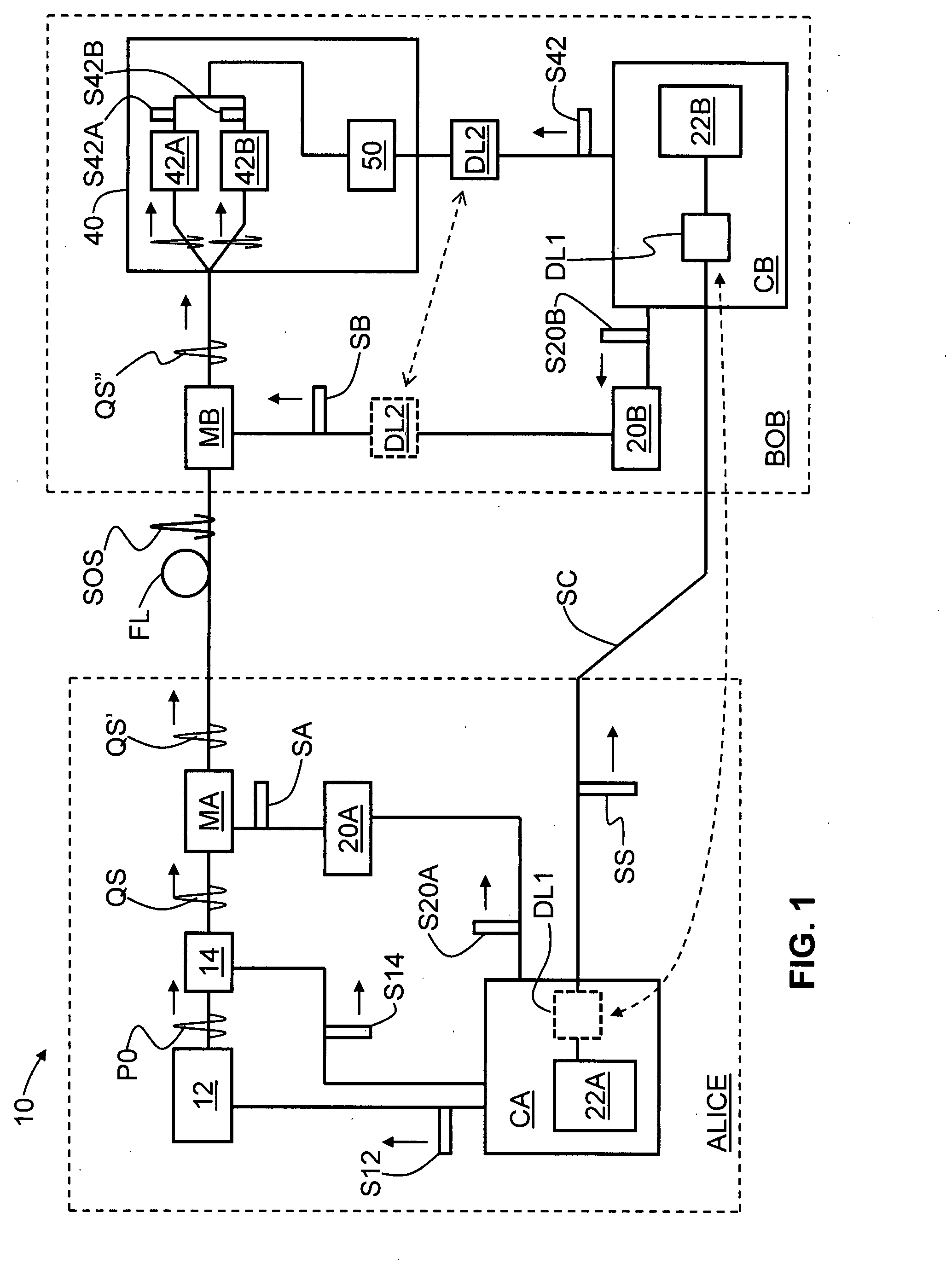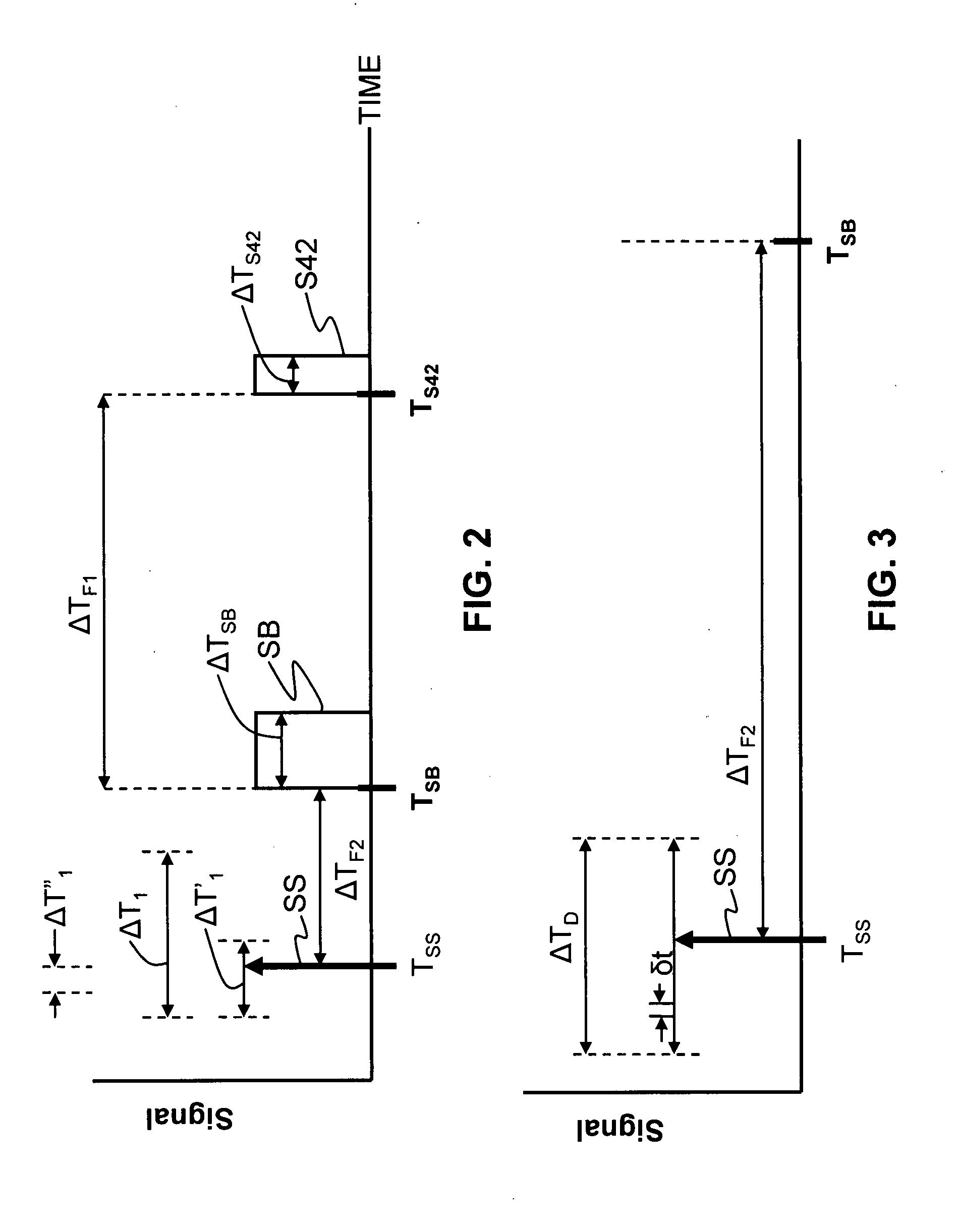QKD system with common-mode dithering
a technology of qkd and common mode, applied in the field of quantum cryptography, can solve problems such as intrusion errors that reveal her presen
- Summary
- Abstract
- Description
- Claims
- Application Information
AI Technical Summary
Benefits of technology
Problems solved by technology
Method used
Image
Examples
Embodiment Construction
[0014]FIG. 1 is a schematic diagram of an example QKD system 10 according to the present invention, illustrating the key elements of the QKD system that allow the system to operate using the common-mode dithering method of the present invention. QKD system 10 includes a first QKD station Alice optically coupled to a second QKD station Bob via an optical fiber link FL.
Alice
[0015]Alice includes a light source 12, a variable optical attenuator 14 arranged downstream of and optically coupled to the light source, and a phase modulator MA arranged downstream of and optically coupled to the VOA. Phase modulator MA is optically coupled to optical fiber link FL and is operably coupled to a modulator driver 20A.
[0016]Alice further includes a controller CA operably coupled to light source 12, VOA 14 and modulator driver 20A. Controller CA controls the operation of light source 12 and modulator driver 20A via respective timed control signals S12 and S20A. VOA 14 is controlled so as to have a se...
PUM
 Login to View More
Login to View More Abstract
Description
Claims
Application Information
 Login to View More
Login to View More - R&D
- Intellectual Property
- Life Sciences
- Materials
- Tech Scout
- Unparalleled Data Quality
- Higher Quality Content
- 60% Fewer Hallucinations
Browse by: Latest US Patents, China's latest patents, Technical Efficacy Thesaurus, Application Domain, Technology Topic, Popular Technical Reports.
© 2025 PatSnap. All rights reserved.Legal|Privacy policy|Modern Slavery Act Transparency Statement|Sitemap|About US| Contact US: help@patsnap.com



